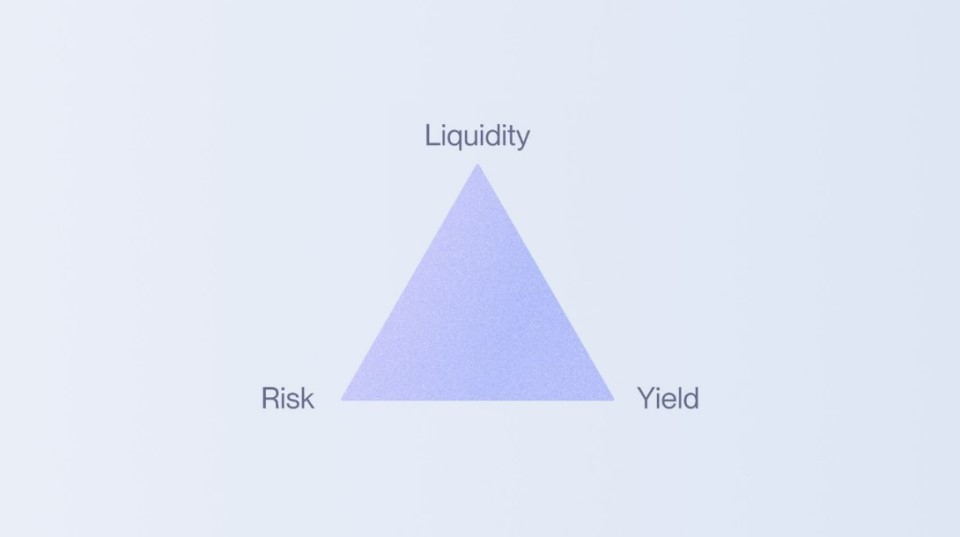Dan Kang is the vice president of finance at Mercury, a Microsoft for Startups partner that offers banking for startups at any size or stage. Mercury is a financial technology company, not a bank. Banking services provided by Choice Financial Group and Evolve Bank & Trust®; Members FDIC.
Cash flows in and out of your business every day. Handling this flow, along with your cash balance, at any point in time is called cash management. Doing cash management well goes beyond just the daily administration of capital to meet short-term obligations. Strong cash management requires a careful financial strategy that scales alongside your company and strikes a careful balance between earning, spending, and investing for continued growth.
Why is cash management important for startups?
You’ve heard it before: Cash is the lifeblood of your business. That makes proactive cash management a critical component of business health, one that ensures your startup’s sustainability by preserving — and increasing — capital.
A good cash management strategy matters in any environment, but it can be crucial during periods of macroeconomic uncertainty that may precipitate inflation and interest rate fluctuations. When interest rates are low, an effective cash management strategy can mean monitoring cash flow trends and optimizing the use of working capital so that you require less cash to operate your business. When interest rates are high, it can mean making sure your cash is working harder for you and earning meaningful yield.
Key considerations for startup cash management
As you mull over what cash management approach makes the most sense for your startup in any given climate, your best bet is to think carefully about when you might need access to cash to meet your obligations, and how you want to invest your money so that you can earn the safest yield.
Raising money for your startup is no easy feat, and poor cash management, or a total lack of cash management strategy, can leave your hard-earned (or hard-raised) cash in a risky position. Rather than operate without a plan in place, you want to manage each dollar responsibly and make it go further. Mastering this requires striking a dynamic balance between three main factors: liquidity, risk, and yield.
Liquidity
Where do you store your money? How quickly can you access it? When you think about investing in a security, for example, you are technically locking up your money. Without proper planning, this can put you at risk of not having enough cash to meet your short-term obligations. To minimize liquidity risk, it’s imperative that you forecast your company’s financials and calculate how much capital you need over different periods of time, ensuring that you have access to a robust runway.
Risk
While the first role of cash is to fund your business operations and growth, excess cash can be used to earn financial returns. Just as you would when running any other part of your business, it’s important to weigh the risk against the reward before making any decisions. For founders, this might mean evaluating your own risk appetite as well as that of your investors and board.
When you have excess cash to invest, there is a wide range of funds and securities to consider, including U.S. Treasurys, other government securities, and corporate bonds. They each vary in their maturity terms and credit ratings. For instance, while corporate bonds usually promise higher returns than government securities, they also carry additional incremental risk. If the corporations you’re investing in can’t pay back their debt, your money — and by proxy, your board’s investments — could start to evaporate.
You also don’t want to place all your eggs in one basket, such as by overinvesting in a single industry or sector, as this can further heighten risk. Mutual funds allow you to diversify your portfolio, making them a great alternative to investing in several individual securities. This in turn unlocks greater potential for growth.
Yield
The flip side of risk is yield. Yield is a function of not only the security issuer and their creditworthiness, but also the maturity of the security or portfolio. Though not always true, yields are generally higher for longer-term securities since investors need to be compensated more to have their cash tied up for longer. Just remember higher yield usually means higher risk, so the key to sustaining safe, consistent returns is finding the sweet spot between high yield and low risk.
Cash management strategies for startups
Depending on your company’s stage, the balance between liquidity, risk, and yield may look different. For example, if you’re an early-stage company, you might start with a simple strategy of using sub-accounts to store cash and manage expenses. On the other hand, if your company has reached a high-growth stage, you might opt for a more mature cash management solution, such as an automated treasury account.
As you determine which approach makes the most sense for your startup, here are four effective strategies to include in your cash management playbook.
1. Open multiple checking accounts or sub-accounts for different designated purposes
As a company grows, so does the number of functions it executes. With higher volumes and an expanding team, incoming and outgoing payments begin branching off into operations/payroll, accounts receivable, and accounts payable. Increasingly, it may make more sense to silo these activities into different buckets rather than try to command them from a single checking account. Although it might seem contradictory, this separation can give you a more complete picture of your overall spending and ensure that you don’t overspend in any one area. It also gives you the visibility necessary to make accurate cash flow projections, which is important for planning around liquidity needs.
To separate your cash flows, you can either open sub-accounts under your existing checking account or — if your bank or banking partner offers the option, like Mercury does— you can open multiple checking accounts. It could be as simple as separating your incoming and outgoing payments, or as sophisticated as creating different accounts for rent, office expenses, and employee spending. You can even arrange joint accounts to co-manage with your business partners.
Armed with the right approach to account organization, you’ll be able to match your various sources of funding to your capital flows, allowing you to monitor your cash flow in real time, maintain a healthier bottom line, and even get a head start on setting aside money for your taxes.
2. Calculate how many months of operating expenses you need to keep readily accessible
Part of maintaining healthy liquidity is making sure you have enough cash available to meet your ongoing obligations, such as your operating costs. This begins with understanding your revenue outlook and expected expenses and using that information to forecast your cash flows and needs over the next 12–15 months.
Having a strong budgeting and spend control process can increase your likelihood of sticking to your forecasts and help you catch things before you veer off course. Keep in mind that because the goal of runway forecasting is to inform real-world cash management decisions, it pays to be realistic as opposed to aspirational. This helps ensure that you don’t find yourself in a tight position if things don’t go according to plan.
As for how many months of operating expenses to keep in your checking and savings accounts, the answer really depends on your business. If your company is a stable, profitable, well-oiled machine and you can rely on the accuracy of your financial forecasts for the next few months, then 2–3 months of operating expenses may be the magic number. This would leave you with just enough to cover predictable monthly expenses with a buffer for any additional one-off costs, while also allowing you to maximize the rest of your cash by diverting it into yield-generating securities.
Truthfully, most companies need more margin for error in case something unexpected arises. In typical cases, roughly six months of burn is recommended. The important thing is to make sure you’re always taking your company’s working capital needs into consideration. For example, if the turnaround for getting paid by your clients can interfere with your deadlines for paying upfront costs like inventory, plan to have more operating funds available so that you don’t have to wait for your customers to pay up.
3. Put your idle cash to work with automated treasury management
For most companies, cash positions change daily, meaning it can be tough to constantly stay on top of when you should or shouldn’t invest your cash. On the one hand, not taking action could mean leaving excess idle cash in accounts that don’t earn yield for you. On the other, defaulting to a strategy that calls on you to take frequent manual actions could mean making emotional decisions rather than carefully considered ones.
If you truly want to make your money work for you, find something you can just set and forget so that you have more time to build and run your company. For this, a treasury management account may be your top horse. Unlike a savings account, where you’re setting aside cash reserves that you don’t expect to make returns on, the purpose of a treasury account is to help you earn yield on your idle cash by investing it in money market funds. These are mutual funds that include securities offering high liquidity, short-term maturity, and lower risk, such as U.S. Treasury bills.
In particular, you’ll want to look for a treasury account from a trustworthy provider that balances risks and returns by offering competitive yield, high liquidity, and low fees while still keeping your cash safe in conservative funds. Ideally, you should be able to schedule auto-transfers and create rules to manage money movements between different accounts, with the ability to top off funds if you need to.
Keep in mind: An important aspect of treasury management goes back to having a strong handle on your runway projections. By understanding how much cash you’ll require over time, you can ladder maturities according to when you need to access that cash.
Say you currently have $5M in cash today. Based on your burn rate, you need $1M to cover burn for the next three months, $2M for the three months afterward, and another $1M for the three months after that. You’d want to invest $2M in short-term securities that’ll mature in three months’ time and $1M in securities that’ll mature in six months’ time. That way, you can earn yield on those amounts you don’t need immediate access to, but they’ll be available when you expect to need them.
Again, you’ll typically earn a higher yield for longer maturities, but you don’t want to over-allocate to long-term maturities if you don’t have strong certainty in your forecasts. Having to sell before securities mature subjects you to market price fluctuations — even traditionally stable securities, like U.S. Treasurys, can see meaningful volatility in certain market environments. The best way to shield yourself from volatility is to minimize frequent buying and selling.
4. Avoid chasing higher yields through high-risk investments.
It may be tempting to seek out nontraditional cash vehicles that promise high yields, but as the saying goes, there’s no such thing as a free lunch. If you’re dead set on chasing higher returns at all costs, it’s important to acknowledge the risk that you — and by extension, your company and investors — would be taking on as a result.
A good example of this is cryptocurrency. While traditional bank and brokerage accounts are subject to regulatory oversight and audits and are usually FDIC- or SIPC-insured so that some portion of your money is protected in the unlikely event of a broker default, high-yield crypto accounts are often completely uninsured. This means that if any of the crypto company’s institutional investors fail or go bankrupt, you could suffer serious losses as a result. Additionally, cryptocurrencies make poor savings accounts because they suffer from high price volatility, fluctuating in accordance with market conditions. In that regard, they can expose you to unnecessary potential losses that will be difficult to explain to your own investors, lenders, and employees.
Accessing your cash can also be its own headache — rather than allowing you the freedom to withdraw your money and close your account at your choosing, some “crypto savings accounts” impose withdrawal limits and restrictions that could jeopardize your liquidity in an emergency. They may also charge fees for withdrawals, which can add up if you have a high transfer volume. Ultimately, your risk is your own, so it’s up to you to do your research and understand what’s at stake.
As your company evolves and your cash balance grows, your cash management strategy will need to evolve as well. Whether it’s adapting your approach according to shifts in the economic climate or automating aspects of your strategy to best support rising cash inflow, it’s important to regularly assess and evolve your cash management approach to make sure that it works for your company.
Mercury is one of several trusted partner benefits available to members of Microsoft for Startups Founders Hub. Members get expedited application approval and $750 cash when you deposit $50,000 in your Mercury bank account within 90 days of approval. In addition members are eligible for $250,000 in accounting services, software and other perks. Members also receive free checking and savings accounts, ACH transfers, domestic and international wires, and more (up to $30,000 in value).
For more resources for building your startup and access to the tools that can help you, sign up today for Microsoft for Startups Founders Hub.












